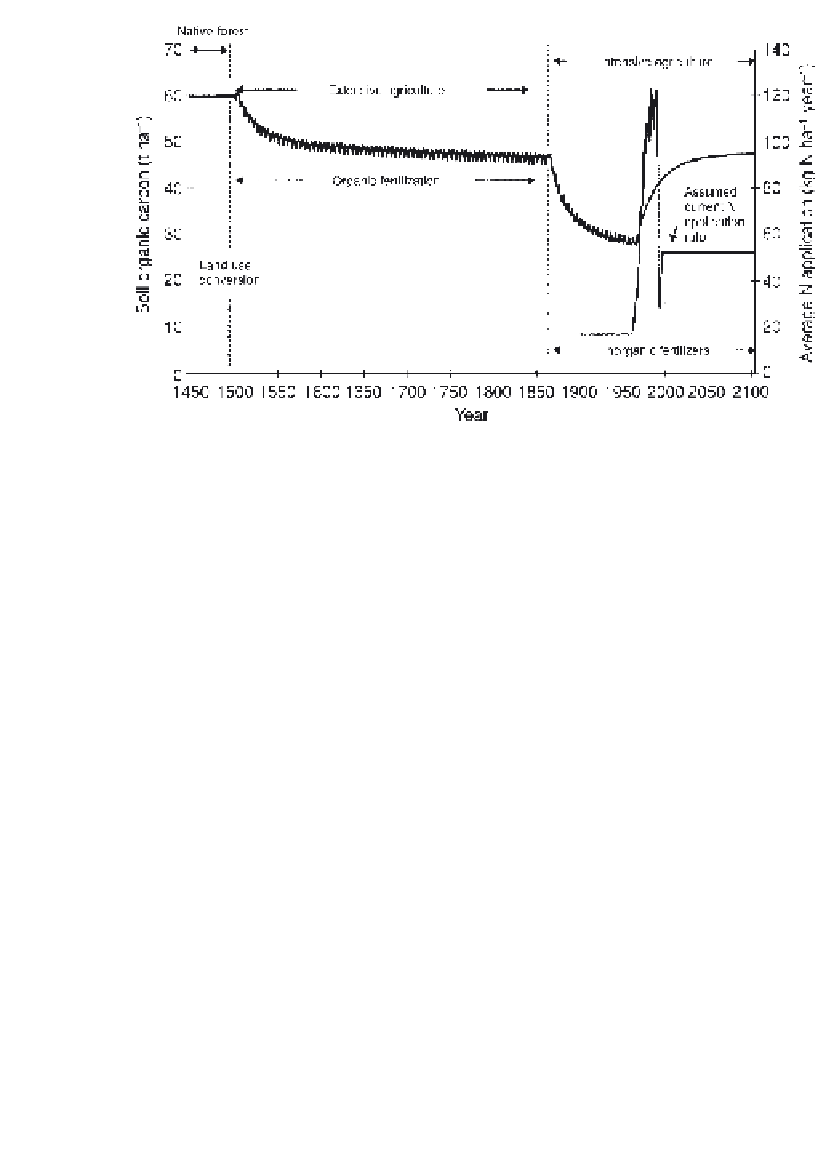Agriculture Reference
In-Depth Information
Fig. 2.1.2.
Historic-future SOC dynamics using fertilizer statistics (CENTURY model).
vegetation, the SOC content of the soil reached a high, steady state. Upon
conversion to extensive arable agriculture, there was a steady loss of SOC.
On conversion to a more intensive arable system, with a low level of N
application, there was a rapid loss of SOC, which recovered following the
high N application rates during the 1970s. Despite the drop in N applica-
tion rates after 1990, assuming that current N application rates continue for
100 years, the model predicted a recovery and stabilization of SOC stocks.
We assumed that current N application rates continue into the future since
no projected figures were available. We remain uncertain regarding the
sustainability of current SOC, due to the limited information on historical
land use and management.
In conclusion, we have shown that different methods for estimating
changes in regional SOC stocks can produce quite different results. There
may be several reasons for the differences between SOC stock estimates
obtained using the regressions CENTURY and Roth-C. The regres-
sion-based estimates are generalizations of data from European long-term
experiments, on specific soil types and with specific cropping regimes.
Reasons for differences in carbon changes resulting from the actual
management scenarios investigated here have been discussed in detail by
Smith
et al
. (1997a,b, 1998, 2000a,b). The long-term data sets used in the
regression-based approach may not be specific to central Hungarian soil,
climatic and management conditions. The dynamic modelling approaches
do, however, account for local soil type, weather and management condi-
tions, and hence we would expect different (and more site-specific) results.
We would also expect different results from the two models (CENTURY
and Roth-C), since they have different structures, pool sizes and turnover











Search WWH ::

Custom Search